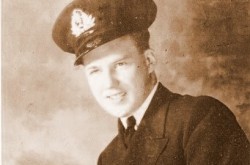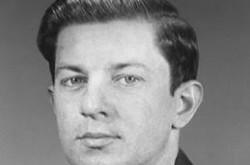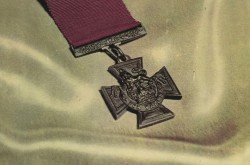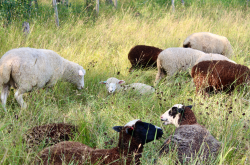Beyond the beans: the advantages of coffee by-products
An Ottawa-based coffee roaster is hoping to give consumers a wake-up call about coffee waste and by-products.
Dr. Hans-Juergen Langenbahn, head roaster with Happy Goat Coffee, is working to spread awareness about some innovative consumer products — made from coffee waste and by-products — which can help support small farmers in coffee-producing countries.
“We [coffee retailers] can adjust the coffee prices, every year it gets a little more expensive. The farmers don't have this option,” explains Langenbahn. “The gap between the producer and what consumers pay for the coffee gets wider and wider. That’s not good.”
Langenbahn is a well-travelled coffee expert. Twice a year, he goes to coffee-producing countries like Ethiopia, Yemen, Rwanda, Indonesia (Sumatra), Brazil, Columbia, Guatemala, and Costa Rica searching for sustainable sources for great coffee. Langenbahn often returns to the same countries; he says it’s important to build up relationships with the coffee-producing community.
He describes the beauty that he sees in these countries — as well as the obvious struggle of the small coffee operations. On a recent trip to Costa Rica, Langenbahn noticed more and more abandoned coffee farms. He says it’s getting too expensive for the local farmers to operate.
“I saw it everywhere in Costa Rica and Guatemala this year, farmers selling their land,” he says. “I saw abandoned farms, just abandoned because it is not worth it anymore.”
New solutions to an old problem
Langenbahn says that by adding value to the coffee by-products, these farmers are giving themselves more opportunities so they don't have to sell their land.
Pulp is a major by-product of coffee production. From the full coffee cherry that gets picked, only two percent of it actually makes it into your cup of coffee, Langenbahn says.
“In Ethiopia, this one processing station — on average — every day gets 40 tonnes of coffee cherries; that means that every day they have 15 tonnes of pulp from these coffee cherries,” says Langenbahn.
Langenbahn explains that farmers are trying different things with this excess of pulp so it's not going to waste. Traditionally it has been used as fertilizer, but on its own it's not very effective so it has to be enhanced.
In addition, coffee pulp is now being used to make something called cascara. Cascara is the dried pulp of the coffee cherry, and can be used to brew tea. Langenbahn explains that there’s two ways to make cascara. To produce cascara from wet processed coffee the pulp — including the skin — is dried immediately after de-pulping. To get cascara from the sun-dried process, the skin, pulp, mucilage, and parchment are all baked together after they are removed.
Cascara is then brewed into a tea. Langenbahn uses 10 g of cascara to 300 g of boiled water and then lets it steep for 10 minutes. The drink has a slightly fruity flavour, and according to Langenbahn flavour varies based on processing and growing conditions. The cascara that Langenbahn has been ordering comes from a specific farm in Costa Rica that, to his knowledge, is currently the only producer of food-grade cascara.
“There are other options and we try to promote that by buying other waste and by-products,” he says.
The mucilage, a pectin and suga- rich layer around the parchment, is another waste product associated with coffee. Langenbahn points out that a concentrate can be made from coffee mucilage.
“It is made from pure coffee mucilage. It is only made by one producer in Columbia and another two in Hawaii; you can use it like honey,” says Langenbahn.
He says that at first, the taste is sweet like molasses, but at the end it gets a more acidic flavour. Currently Langenbahn and his counterparts are trying to get this item approved for import.
Believe it or not, roasteries and coffee shops are no exception when it comes to producing waste. Langenbahn explains there has been a growing interest in using spent coffee grounds to grow mushrooms. He says there are several small companies across Europe and in North America who are using this method of cultivation.
“It’s perfect and at the end you can compost it and you have a perfect fertilizer,” says Langenbahn.

Dr. Langenbahn is more qualified than most when it comes to coffee. From coffee cherry to bean, he knows the intricate production process well.
Finding the coffee trail
Before moving to Canada in 2007, Langenbahn lived in Germany. Coffee hasn't always been a lifelong priority for him though; he explains that he first got into the industry in 2001.
“I started in social anthropology,” says Langenbahn. “When I was writing my thesis in anthropology, I was doing field research in Sudan and from Sudan, I could see Ethiopia. I remember saying, ‘One day, I want to go to there.”
Langenbahn did eventually make it to Ethiopia. While he was there, he realized that coffee has a lot to do with social anthropology. Making the switch from anthropology to a specialization in coffee just seemed natural. While in Ethiopia, he immersed himself in coffee culture; he did his cup-tasting training there and organized coffee tours.
“You have to deal a lot with farmers in mostly remote areas and that's the good part in travelling for coffee.” explains Langenbahn. “You’re always in these beautiful mountainous areas where nobody else is going and that’s always awesome. You’re always deep in a forest.”
Interested in learning more about coffee by-products? Dr. Langenbahn will be speaking at the Canada Agriculture and Food Museum on May 23 as part of the Food for Thought lecture series





















